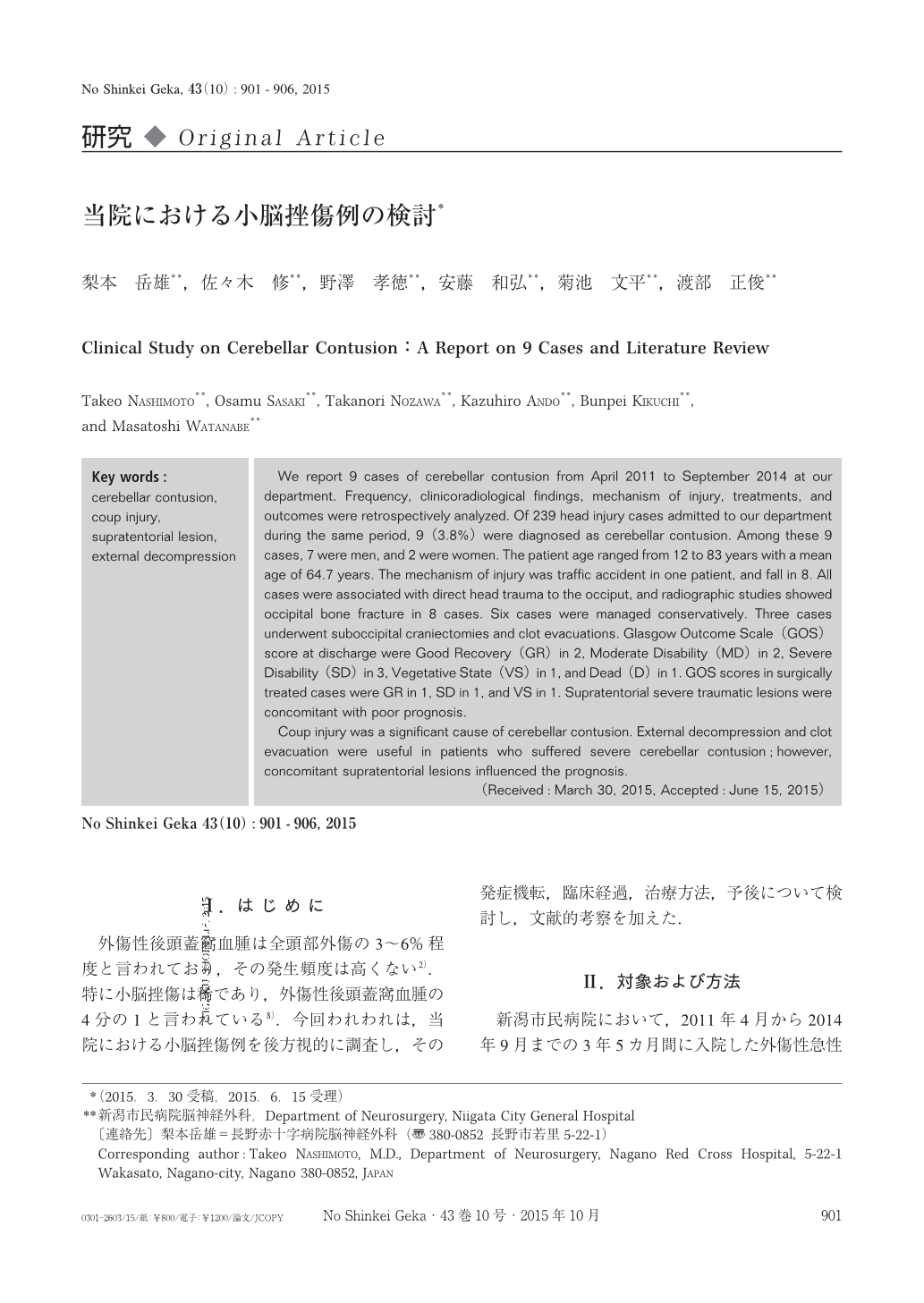Japanese
English
- 有料閲覧
- Abstract 文献概要
- 1ページ目 Look Inside
- 参考文献 Reference
Ⅰ.はじめに
外傷性後頭蓋窩血腫は全頭部外傷の3〜6%程度と言われており,その発生頻度は高くない2).特に小脳挫傷は稀であり,外傷性後頭蓋窩血腫の4分の1と言われている8).今回われわれは,当院における小脳挫傷例を後方視的に調査し,その発症機転,臨床経過,治療方法,予後について検討し,文献的考察を加えた.
We report 9 cases of cerebellar contusion from April 2011 to September 2014 at our department. Frequency, clinicoradiological findings, mechanism of injury, treatments, and outcomes were retrospectively analyzed. Of 239 head injury cases admitted to our department during the same period, 9(3.8%)were diagnosed as cerebellar contusion. Among these 9 cases, 7 were men, and 2 were women. The patient age ranged from 12 to 83 years with a mean age of 64.7 years. The mechanism of injury was traffic accident in one patient, and fall in 8. All cases were associated with direct head trauma to the occiput, and radiographic studies showed occipital bone fracture in 8 cases. Six cases were managed conservatively. Three cases underwent suboccipital craniectomies and clot evacuations. Glasgow Outcome Scale(GOS)score at discharge were Good Recovery(GR)in 2, Moderate Disability(MD)in 2, Severe Disability(SD)in 3, Vegetative State(VS)in 1, and Dead(D)in 1. GOS scores in surgically treated cases were GR in 1, SD in 1, and VS in 1. Supratentorial severe traumatic lesions were concomitant with poor prognosis.
Coup injury was a significant cause of cerebellar contusion. External decompression and clot evacuation were useful in patients who suffered severe cerebellar contusion;however, concomitant supratentorial lesions influenced the prognosis.

Copyright © 2015, Igaku-Shoin Ltd. All rights reserved.


